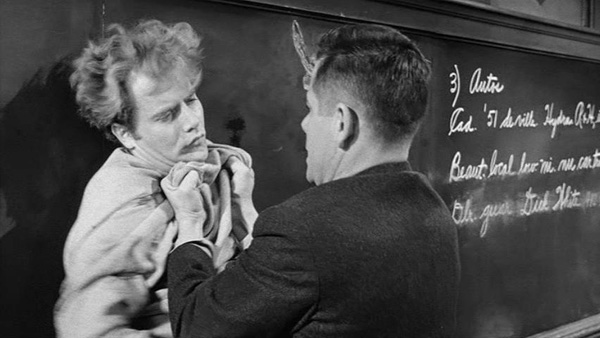Discipline reform may have contributed to the violence at Douglas High School, writes Erika Sanzi, who blogs on Good School Hunting, on Real Clear Education.
. . . since 2013, schools have been under enormous pressure — for good reason — to lower their suspension, expulsion, and student arrest numbers. Broward County was part of the PROMISE program (Preventing Recidivism through Opportunities, Mentoring, Interventions, Supports & Education), which was intended, according to the website, “to safeguard the student from entering the judicial system.”
Are Broward schools excusing dangerous misbehavior? asked Ryan Nicol in the Sunshine State News. Why wasn’t Nikolas Cruz arrested for assault or cyber stalking? It’s a fair question, writes Sanzi.
Education Next is hosting a timely forum: “Should the Trump administration retain, revise, or rescind the Obama administration guidance on school discipline?”
The federal guidance misinterprets discipline data and threatens to make classrooms more chaotic argues Fordham’s Michael Petrilli.
![]()
Discipline disparities “are often driven by sky-high suspension rates in a handful of high-poverty schools,” he writes.
It could be these schools are overwhelmed by students’ problems — or that “these are simply bad schools, with weak leadership, low-quality teaching, and a broken climate,” he writes. The school-discipline-to-prison pipeline may really be “the bad-school-to-prison pipeline.”
Pushing schools to reduce suspensions without funding alternatives may make these schools even less orderly and safe, he writes.
Don’t walk back the federal guidance, writes Dan Losen of UCLA’s Civil Rights Project. Unjustified suspensions harm the futures of minority and disabled students.
He cites a recently published study that compared long-term outcomes for suspended students with those for non-suspended students with similar pre-suspension risk behaviors, self-reported delinquency, parents’ socioeconomic status and other factors. Those who’d been suspended had less education and were more likely to have a criminal record.
In most high-suspending schools and districts, the majority of the offenses and largest share of racial disparities are punishments for minor nonviolent violations of school codes of conduct, not unlawful or dangerous behavior.
“Studies that controlled for prior behavior and poverty have demonstrated that schools run by principals who were committed to using suspensions sparingly had lower suspensions, lower racial disparity, and higher achievement, Losen writes.
Although Petrilli and Losen disagree about the research, they seem to overlap on the question of whether dysfunctional schools rely heavily on suspension.
Vulnerable students — especially those with disabilities and children of color — are hurt by the”cult of compliance,” writes David M. Perry on Pacific Standard.
At the end of January, a seven-year-old Latino boy in Miami, Florida, was arrested and led away from his school in handcuffs. School officials alleged that he had been playing with his food, was scolded, reacted badly, and ended up attacking his teacher. That’s not great behavior, but he’s a small child and posed no real risk. Rather than asking why the incident escalated and how they could change the environment to avoid such incidents, school police simply took him to prison. Later, police told his father that the boy was a “danger to society” and used the Baker Act to involuntarily commit him.
Students with special needs are far more likely than their classmates to be suspended.
The Parkland shootings don’t justify more cops and harsh discipline, writes RiShawn Biddle on Dropout Nation.


























